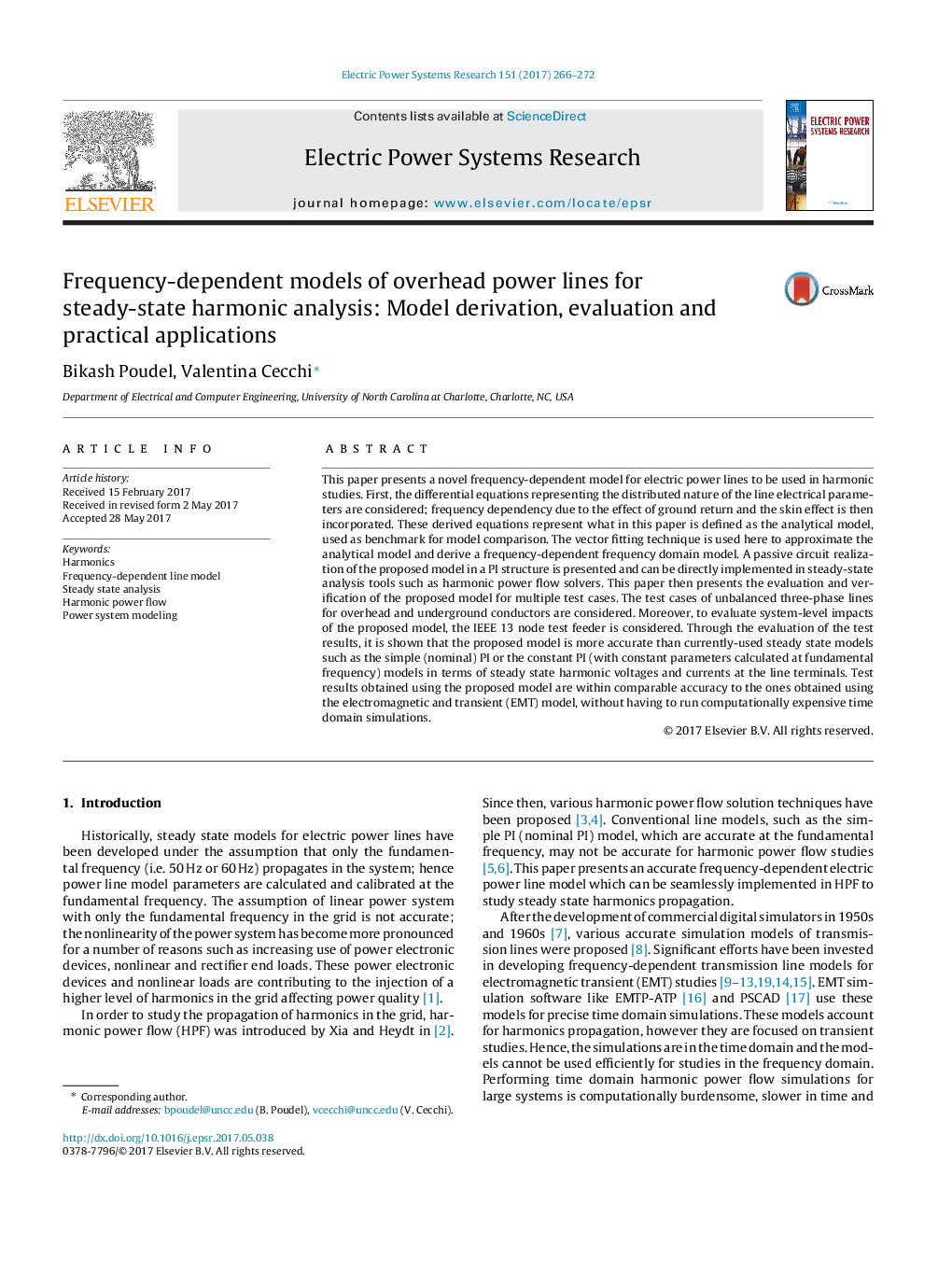| Article ID | Journal | Published Year | Pages | File Type |
|---|---|---|---|---|
| 5001020 | Electric Power Systems Research | 2017 | 7 Pages |
Abstract
This paper presents a novel frequency-dependent model for electric power lines to be used in harmonic studies. First, the differential equations representing the distributed nature of the line electrical parameters are considered; frequency dependency due to the effect of ground return and the skin effect is then incorporated. These derived equations represent what in this paper is defined as the analytical model, used as benchmark for model comparison. The vector fitting technique is used here to approximate the analytical model and derive a frequency-dependent frequency domain model. A passive circuit realization of the proposed model in a PI structure is presented and can be directly implemented in steady-state analysis tools such as harmonic power flow solvers. This paper then presents the evaluation and verification of the proposed model for multiple test cases. The test cases of unbalanced three-phase lines for overhead and underground conductors are considered. Moreover, to evaluate system-level impacts of the proposed model, the IEEE 13 node test feeder is considered. Through the evaluation of the test results, it is shown that the proposed model is more accurate than currently-used steady state models such as the simple (nominal) PI or the constant PI (with constant parameters calculated at fundamental frequency) models in terms of steady state harmonic voltages and currents at the line terminals. Test results obtained using the proposed model are within comparable accuracy to the ones obtained using the electromagnetic and transient (EMT) model, without having to run computationally expensive time domain simulations.
Related Topics
Physical Sciences and Engineering
Energy
Energy Engineering and Power Technology
Authors
Bikash Poudel, Valentina Cecchi,
